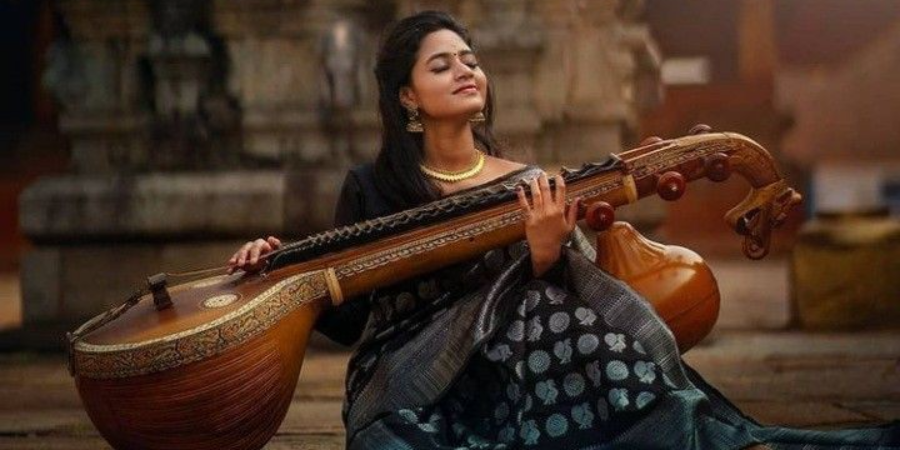

Veena is a musical instrument that holds a significant place in the rich cultural heritage of the Indian subcontinent. With its mesmerizing sound and unique design, the veena has captivated audiences for centuries. In this article, we will delve into the origins, structure, playing technique, and cultural significance of this enchanting instrument.
The veena traces its roots back to ancient times, with references to similar stringed instruments found in ancient Vedic scriptures. It is believed to have evolved from the ancient harp-like instrument known as the Rudra Veena. Over time, the veena underwent several modifications, leading to the development of various regional styles and forms. The most commonly recognized types are the Saraswati Veena, Rudra Veena, and Vichitra Veena.
The veena's structure is both elegant and complex. It consists of a hollow resonator, usually made from a single piece of well-seasoned jackwood, which gives it a warm and rich tonal quality. The resonator is shaped like a large, rounded, or barrel-like structure, known as the "kudam" or "tumbi." Extending from the top of the resonator is a long, slender neck, or "dandi," which supports the strings.
The veena typically has seven strings, although variations exist with more or fewer strings. These strings are made from metal or silk, and each string is tuned to a specific pitch. The main playing string, known as the "nayaki" or "sarani," is the thickest and is plucked with the index finger or a plectrum. The remaining strings are known as "sympathetic strings" and resonate in harmony with the main string to create a captivating sound.
Playing the veena requires skill, precision, and a deep understanding of Indian classical music. The musician sits cross-legged, with the resonator resting on the floor. The veena is balanced on the player's left shoulder while the fingers of the left hand press the strings against the frets on the neck. The right hand plucks the strings, creating intricate melodies and ornamentations. The veena's range and expressive capabilities make it an ideal instrument for exploring the nuances of Indian classical music.
The cultural significance of the veena cannot be overstated. It is closely associated with the goddess Saraswati, the Hindu deity of knowledge, arts, and music. In Hindu mythology, Saraswati is often depicted playing the veena, symbolizing the divine essence of music and its power to uplift and enlighten. The veena is also deeply ingrained in the Carnatic music tradition of South India and the Hindustani classical music of North India, serving as a primary accompaniment to vocal performances and solo recitals.
Over the years, the veena has evolved beyond its classical roots and has found its way into various contemporary music genres, including fusion, world music, and film soundtracks. Its haunting melodies and meditative qualities continue to inspire musicians and listeners alike, transcending cultural boundaries.
Thank you for reading…..
vvjk …….


